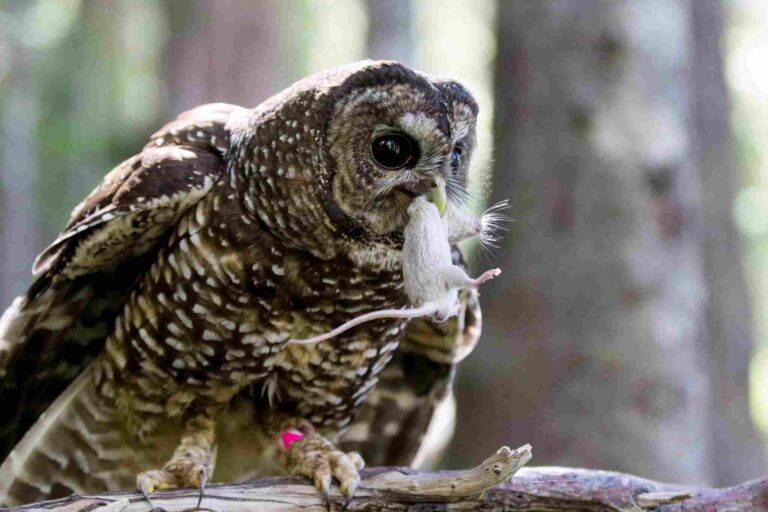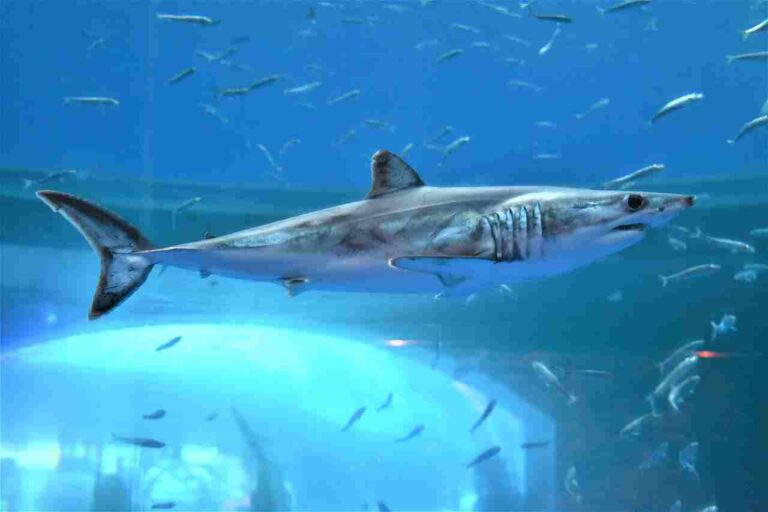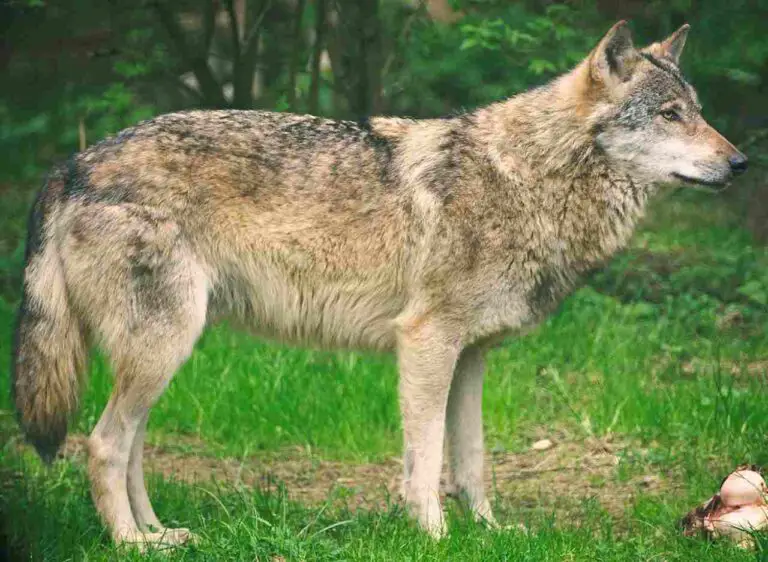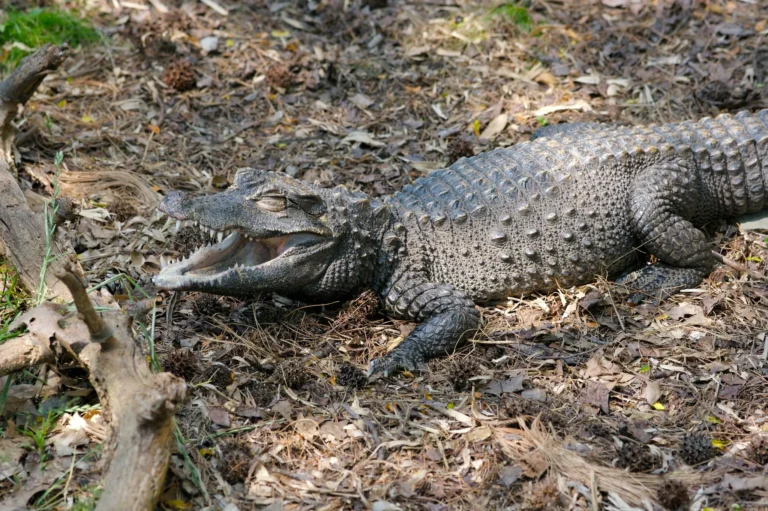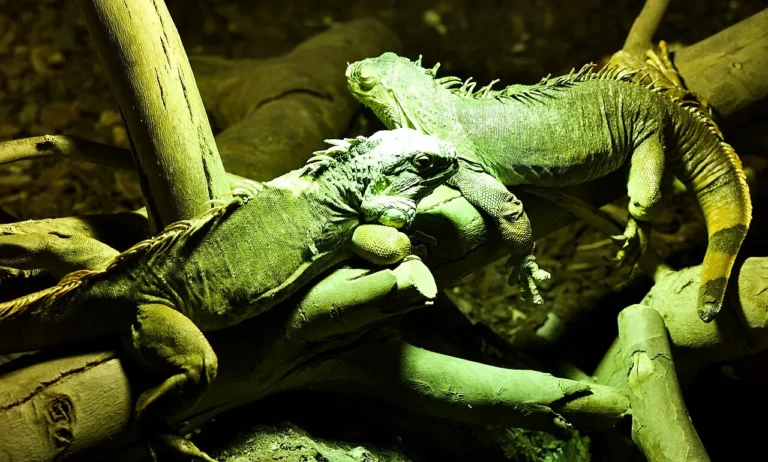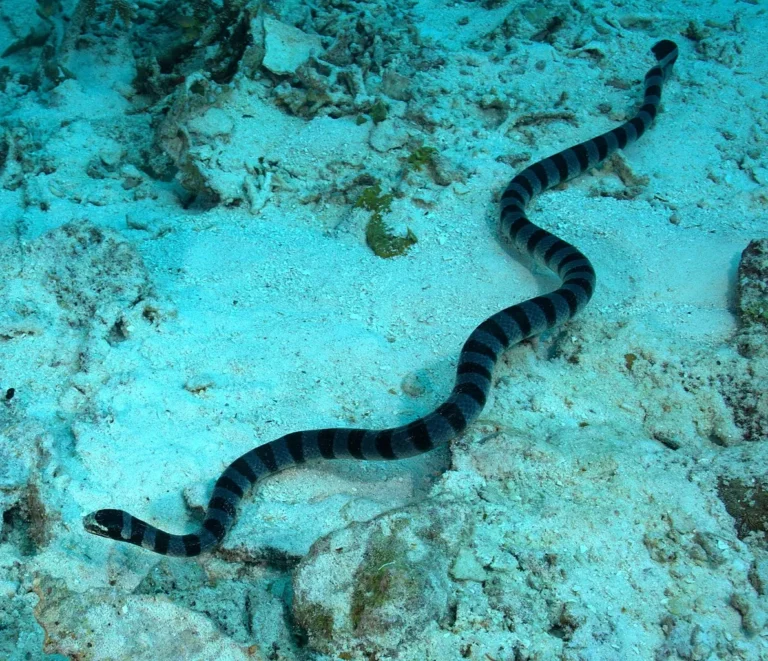Is a Penguin a Consumer? Overview of Penguin Consumer Status and Role
A penguin is a consumer in the food chain or energy pyramid because it relies on external food sources to gain energy and nutrients for it’s survival.
Here we discuss the consumer role and trophic position of penguins in ecosystems, while answering related questions.
Is a Penguin a Producer?
A penguin is not a producer because it is incapable of producing its own food or synthesizing organic compounds from inorganic resources. On the contrary, penguins are heterotrophic organisms that must consume other organisms to survive.
Reasons Why A Penguin is Not a Producer
1. Penguins Have No Chlorophyll Pigmentation
Penguins have no chlorophyll pigmentation, which is a key reason why they are not considered producers in the ecosystem. Chlorophyll is a green pigment found in plants and algae that allows them to carry out photosynthesis, the process of converting sunlight into energy. This energy is then used to synthesize organic compounds, such as sugars, which serve as food for the organism.
Unlike plants and algae, penguins do not possess chlorophyll pigmentation. This means that they are unable to carry out photosynthesis and cannot synthesize organic compounds from inorganic resources like carbon dioxide, water, and solar radiation. As a result, penguins rely on external sources for their energy and nutrients.
Instead of producing their own food, penguins are classified as consumers in the ecosystem. They obtain their energy by consuming other organisms, such as fish, krill, and squid. Penguins are well-adapted to their marine environment and have evolved specialized feeding mechanisms to catch their prey.
Penguins are secondary consumers, which means that they feed on primary consumers within their habitat. Primary consumers, also known as herbivores, directly consume producers (plants or algae) for their energy and nutrients. Penguins, on the other hand, feed on these primary consumers, such as fish and krill, making them secondary consumers in the food chain.
The feeding habits and preferences of penguins are predatory and carnivorous. They have sharp beaks and strong jaws that enable them to catch and consume their prey. Penguins are skilled hunters, using their streamlined bodies and powerful flippers to swim swiftly through the water and catch their food.
While penguins are higher up in the food chain compared to primary consumers, they are still vulnerable to predation themselves. Larger consumers, such as seals and sea lions, prey on penguins in the coastal terrain. This highlights the importance of maintaining a balanced ecosystem, where each organism plays a specific role in the food chain.
It’s worth noting that the predatory effect of penguins on the food chain is relatively small. They primarily feed on small fish and krill, which are abundant in their habitats. Penguins do not have a significant impact on the overall population dynamics of their prey species.
2. They Cannot Synthesize Organic Compounds
Penguins cannot synthesize organic compounds from inorganic resources like carbon dioxide, water, and solar radiation. This inability is a key reason why penguins are not considered producers in the ecosystem. Unlike plants and algae, which have chlorophyll pigmentation and can carry out photosynthesis, penguins rely on external sources for their energy and nutrients.
Photosynthesis is the process by which plants and algae convert sunlight into energy. They use chlorophyll, a green pigment, to capture solar radiation and convert it into chemical energy. This energy is then used to synthesize organic compounds, such as sugars, which serve as food for the organism.
However, penguins do not possess chlorophyll pigmentation. As a result, they are unable to carry out photosynthesis and cannot synthesize organic compounds from inorganic resources. Instead, penguins rely on consuming other organisms to obtain their energy and nutrients.
Penguins are well-adapted to their marine environment and have evolved specialized feeding mechanisms to catch their prey. They primarily feed on fish, krill, and squid, which provide them with the necessary energy and nutrients. By consuming these organisms, penguins fulfill their role as consumers in the ecosystem.
As consumers, penguins are secondary consumers within their habitat. They feed on primary consumers, such as fish and krill, which directly consume producers (plants or algae) for their energy and nutrients. Penguins occupy a higher trophic level in the food chain compared to primary consumers.
The feeding habits and preferences of penguins are predatory and carnivorous. They have sharp beaks and strong jaws that enable them to catch and consume their prey. Penguins are skilled hunters, using their streamlined bodies and powerful flippers to swim swiftly through the water and capture their food.
While penguins are higher up in the food chain compared to primary consumers, they are still vulnerable to predation themselves. Larger consumers, such as seals and sea lions, prey on penguins in the coastal terrain. This highlights the interconnectedness and importance of maintaining a balanced ecosystem, where each organism plays a specific role in the food chain.
3. Typical Physiological Features of Producers are Lacking in Penguins
One of the reasons why penguins are not considered producers in the ecosystem is because they lack typical physiological features found in producers. Producers, such as plants and algae, possess certain characteristics that enable them to synthesize organic compounds from inorganic resources like carbon dioxide, water, and solar radiation.
For instance, plants have roots that anchor them to the ground and absorb water and nutrients from the soil. They also have leaves that contain chlorophyll pigmentation, which allows them to capture sunlight and carry out photosynthesis. Algae, on the other hand, have flagella that help them move and position themselves to maximize their exposure to sunlight.
These physiological features are crucial for producers to carry out photosynthesis and convert solar energy into chemical energy. However, penguins lack these features. They do not have roots, leaves, or flagella that would enable them to synthesize organic compounds from inorganic resources.
Without the ability to carry out photosynthesis, penguins rely on external sources for their energy and nutrients. They obtain their food by consuming other organisms, such as fish, krill, and squid. This makes them consumers rather than producers in the ecosystem.
Penguins have evolved to be well-adapted to their marine environment and have developed specialized feeding mechanisms to catch their prey. They have streamlined bodies and powerful flippers that allow them to swim swiftly through the water and capture their food. Their sharp beaks and strong jaws enable them to catch and consume their prey effectively.
As consumers, penguins occupy a higher trophic level in the food chain compared to producers. They are secondary consumers within their habitat, feeding on primary consumers like fish and krill. These primary consumers directly consume producers for their energy and nutrients.
While penguins are higher up in the food chain, they are still vulnerable to predation themselves. Larger consumers, such as seals and sea lions, prey on penguins in the coastal terrain. This highlights the delicate balance and interconnectedness of the ecosystem, where each organism plays a specific role in the food chain.
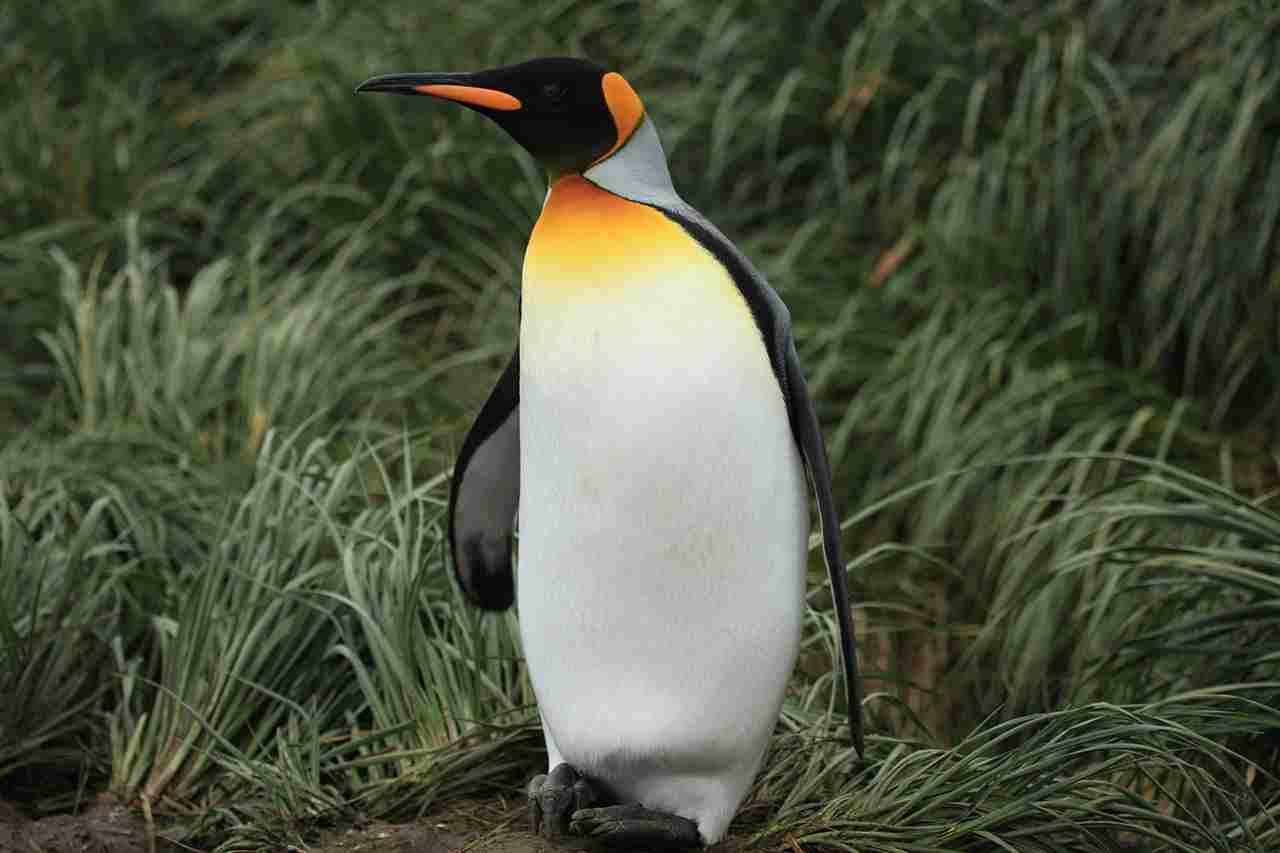
What Type of Consumer is a Penguin?
Penguins can be classified as secondary or second-order consumers. This is because they are directly above primary consumers like zooplankton and small fish in terms of biological complexity and trophic impact.
As secondary consumers, penguins are predatory in nature and rely on consuming other organisms for their energy and nutrients. Unlike primary consumers that feed on producers, such as plants and algae, penguins feed on primary consumers themselves. They are carnivorous, meaning they primarily consume fish, krill, and squid.
Penguins have evolved to be efficient hunters, with specialized adaptations that allow them to catch and consume their prey effectively. Their streamlined bodies and powerful flippers enable them to swim swiftly through the water, while their sharp beaks and strong jaws allow them to catch and consume their prey with precision.
In the food chain hierarchy of marine and coastal ecosystems, penguins are considered low-level predators. They fall behind tertiary and quaternary consumers, which are larger predators that feed on a variety of organisms, including penguins. This highlights the interconnectedness and delicate balance of the ecosystem, where each organism plays a specific role in maintaining the overall health and stability of the food chain.
It’s important to note that penguins are not herbivorous. Unlike primary consumers that rely on producers for their energy and nutrients, penguins obtain their food by consuming other organisms. This makes them distinct from herbivores, which primarily feed on plants and algae.
Are Penguins Primary or Secondary Consumers?
Penguins are not primary consumers, but rather secondary consumers. This distinction arises from the fact that penguins do not possess herbivorous tendencies and are biologically more complex than most marine and coastal primary consumers.
Primary consumers, also known as herbivores, rely on producers such as plants and algae for their energy and nutrients. They have the ability to synthesize organic compounds and possess chlorophyll pigmentation, which allows them to convert sunlight into energy through photosynthesis. However, penguins lack these essential characteristics.
Unlike primary consumers, penguins obtain their food by consuming other organisms. They are carnivorous in nature and primarily feed on fish, krill, and squid. This dietary preference places them in the category of secondary consumers. Penguins have evolved to be efficient hunters, equipped with specialized adaptations that enable them to catch and consume their prey effectively.
In terms of biological complexity, penguins surpass primary consumers within their habitat. They possess unique physiological features that are lacking in typical producers. Penguins have streamlined bodies and powerful flippers, which allow them to swim swiftly through the water in pursuit of their prey. Their sharp beaks and strong jaws enable them to catch and consume their prey with precision.
The role of penguins as secondary consumers is significant within the food chain hierarchy of marine and coastal ecosystems. They occupy a position directly above primary consumers like zooplankton and small fish. While penguins are considered low-level predators, they fall behind larger predators known as tertiary and quaternary consumers. These higher-level predators feed on a variety of organisms, including penguins, highlighting the interconnectedness and delicate balance of the ecosystem.
It is important to note that penguins are not herbivores. Their classification as secondary consumers distinguishes them from primary consumers that rely on producers for their energy and nutrients. Penguins obtain their food by consuming other organisms, making them carnivorous in nature.
Reasons Why Penguins are Secondary Consumers
1. They are More Biologically Complex Than Primary Consumers Within Their Habitat
Penguins are considered secondary consumers due to their biological complexity compared to primary consumers within their habitat. One reason for this classification is that penguins are not microscopic organisms. Unlike primary consumers such as plankton or small insects, penguins are relatively large in size and have well-developed digestive and nervous systems.
The size and complexity of penguins allow them to consume larger prey and process it more efficiently. While primary consumers rely on consuming microscopic organisms or plant matter, penguins have the ability to hunt and consume larger prey such as fish, krill, and small jellyfish. This ability to feed on larger organisms is another factor that distinguishes penguins as secondary consumers.
Penguins possess specialized adaptations that enable them to catch and consume their prey. Their streamlined bodies, webbed feet, and strong wings allow them to swim swiftly through the water, pursuing and capturing their prey. Penguins also have sharp beaks and strong jaws that enable them to catch and consume their prey effectively.
In addition to their physical adaptations, penguins exhibit predatory and carnivorous feeding habits and preferences. They actively hunt and consume other organisms as their primary source of nutrition. This predatory behavior further supports their classification as secondary consumers within the food chain.
Despite being secondary consumers, penguins are not at the top of the food chain in their coastal terrain. They can fall prey to larger consumers such as sea lions or predatory birds like eagles. This vulnerability to predation from larger consumers is another characteristic that distinguishes penguins as secondary consumers.
It is important to note that while penguins play a role as secondary consumers within their ecosystem, their predatory effect on the food chain is relatively small. They primarily feed on smaller organisms, and their population size and feeding habits do not significantly impact the overall balance of the ecosystem.
2. Penguins Feed on Primary Consumers
Penguins feed on primary consumers such as krill and small jellyfish, which is one of the reasons why they are classified as secondary consumers. These small organisms serve as a vital food source for penguins, providing them with the necessary energy and nutrients to survive.
Krill, for example, are tiny shrimp-like creatures that form large swarms in the ocean. They are a primary food source for many marine animals, including penguins. Penguins use their streamlined bodies and strong swimming abilities to dive into the water and catch krill in their beaks.
Similarly, small jellyfish are also part of the penguins’ diet. These gelatinous creatures float in the water and are consumed by penguins as they swim through their habitat. Penguins have adapted to their environment by developing specialized beaks and jaws that allow them to capture and consume these primary consumers efficiently.
By feeding on primary consumers, penguins play a crucial role in the food chain. They help regulate the population of these smaller organisms, preventing them from overpopulating and disrupting the balance of the ecosystem. Additionally, the consumption of primary consumers provides penguins with the necessary nutrients to support their own growth and survival.
3. The Feeding Habits and Preferences of Penguins are Predatory and Carnivorous
The feeding habits and preferences of penguins are a key reason why they are classified as secondary consumers. Penguins have a predatory nature and are carnivorous, relying on a diet primarily composed of fish and other marine organisms.
Penguins are skilled hunters in the water, using their streamlined bodies and strong swimming abilities to pursue and capture their prey. They have adapted to their environment by developing sharp beaks and hooked jaws, which allow them to catch and consume their food efficiently.
Fish, such as anchovies and sardines, are a staple in the penguins’ diet. These small fish provide the necessary nutrients and energy for penguins to thrive in their habitat. Penguins also feed on squid and krill, which are abundant in the ocean and serve as additional sources of food.
The predatory and carnivorous nature of penguins plays a crucial role in the food chain. By consuming other organisms, penguins help regulate the population of their prey, preventing overpopulation and maintaining the balance of the ecosystem. Additionally, the consumption of these primary consumers provides penguins with the essential nutrients they need for growth and survival.
4. Penguins Fall Prey to Larger Consumers in The Coastal Terrain
Penguins, despite being secondary consumers, are not exempt from being preyed upon by larger consumers in the coastal terrain. In fact, penguins often fall victim to tertiary and quaternary consumers such as orcas and great white sharks. These apex predators pose a significant threat to penguins due to their size, strength, and predatory nature.
Orcas, also known as killer whales, are formidable hunters that inhabit the same waters as penguins. They are known to target penguins as part of their diet, using their intelligence and cooperative hunting strategies to their advantage. Great white sharks, on the other hand, are renowned for their powerful jaws and ability to ambush their prey. Penguins, with their streamlined bodies and agile swimming abilities, can become easy targets for these apex predators.
The presence of larger consumers in the coastal terrain highlights the vulnerability of penguins within the food chain. Despite their role as secondary consumers, penguins must constantly navigate the delicate balance between being predators and potential prey. This dynamic interaction between penguins and larger consumers further emphasizes the intricate web of life in their ecosystem.
In summary, penguins may be secondary consumers, but they are not exempt from the predatory nature of larger consumers in the coastal terrain. The presence of apex predators like orcas and great white sharks serves as a reminder of the constant challenges and risks that penguins face in their quest for survival.
5. The Predatory Effect of Penguins On the Food Chain is Relatively Small
Unlike higher consumers, penguins have a relatively small predatory effect on the food chain. While they are secondary consumers, their impact on the overall ecosystem is not as significant as that of apex predators or larger consumers. This can be attributed to several factors that limit their predatory influence.
One reason why penguins have a relatively small predatory effect is their feeding habits and preferences. Penguins primarily feed on small fish, krill, and other marine invertebrates. They are not known to actively hunt or prey upon larger species within their habitat. Instead, they focus on consuming abundant and easily accessible prey that is lower in the food chain. This selective feeding behavior helps to regulate the populations of primary consumers, but it does not have a substantial impact on higher trophic levels.
Additionally, the size and physiological features of penguins contribute to their limited predatory effect. Penguins are relatively small in comparison to apex predators like orcas and great white sharks. Their size restricts their ability to consume larger prey and limits their position within the food chain. Furthermore, penguins lack the physical adaptations and hunting strategies that enable them to effectively prey upon larger species. Their streamlined bodies and specialized beaks are better suited for capturing and consuming smaller prey items.
Another factor that limits the predatory effect of penguins is their vulnerability to predation themselves. As mentioned in the preceding section, penguins are often preyed upon by larger consumers such as orcas and great white sharks. This predation pressure keeps penguin populations in check and prevents them from exerting excessive influence on the food chain. The constant threat of predation forces penguins to prioritize their own survival rather than actively preying upon other species.
Penguin Food Chain Position and Role
Penguins play a crucial role in the food chain as secondary consumers, occupying trophic level 3. They primarily feed on primary consumers, such as small fish and krill, and fall directly below tertiary consumers like large predatory fish. Let’s explore their position and role in more detail.
One of the key contributions of penguins to the food chain is their ability to facilitate energy transfer. As secondary consumers, they consume primary consumers, which in turn helps to regulate the populations of these lower trophic level organisms. By feeding on primary consumers, penguins ensure that energy flows efficiently through the food chain, allowing for the transfer of nutrients and energy from lower to higher trophic levels.
In addition to facilitating energy transfer, penguins also play a role in regulating primary consumer populations. Their consumption of primary consumers helps to control their numbers, preventing overgrazing and maintaining a balanced ecosystem. By keeping primary consumer populations in check, penguins help to ensure that resources are not depleted and that the overall health of the ecosystem is maintained.
Penguins also help to minimize the risk of overgrazing in their habitat. Overgrazing occurs when primary consumers consume vegetation or other food sources at a rate that exceeds their natural replenishment. By consuming primary consumers, penguins help to regulate their populations and prevent them from overgrazing their food sources. This, in turn, helps to maintain the balance between primary consumers and their food supply, ensuring the sustainability of the ecosystem.
Furthermore, penguins contribute to the overall biodiversity of their habitat. As secondary consumers, they occupy a unique niche in the food chain, distinct from both primary consumers and apex predators. This diversity in trophic levels helps to create a more resilient and stable ecosystem. The presence of penguins in the food chain adds complexity and richness to the overall biodiversity, making their role essential for the overall health and functioning of the ecosystem.
FAQs
1. Is a Penguin a First Level Consumer?
No, a penguin is not a first level consumer. Instead, it is classified as a second level or secondary consumer. Throughout the earlier discussions, we have explored the reasons why penguins are considered secondary consumers within their habitat.
Penguins possess certain characteristics and behaviors that differentiate them from first level consumers, also known as primary consumers. They do not have the ability to produce their own food through photosynthesis, as they lack chlorophyll pigmentation and cannot synthesize organic compounds. Additionally, penguins exhibit physiological features that are not typically found in producers.
As secondary consumers, penguins rely on a diet that consists mainly of primary consumers. They feed on fish, krill, and other small marine organisms, which places them higher in the food chain. Their feeding habits and preferences are predatory and carnivorous in nature.
However, it is important to note that penguins themselves can become prey to larger consumers in the coastal terrain. Despite their position as secondary consumers, the predatory effect of penguins on the food chain is relatively small.
2. Is a Penguin a Secondary Consumer?
Yes, a penguin is indeed a secondary consumer. Throughout the earlier discussions, we have explored the reasons why penguins are classified as secondary consumers within their habitat.
Penguins possess certain characteristics and behaviors that differentiate them from first level consumers, also known as primary consumers. They lack the ability to produce their own food through photosynthesis, as they do not have chlorophyll pigmentation and cannot synthesize organic compounds. This inability to produce their own food places them higher in the food chain as secondary consumers.
As secondary consumers, penguins rely on a diet that consists mainly of primary consumers. They feed on fish, krill, and other small marine organisms, which are the primary consumers in their ecosystem. This feeding habit of consuming other organisms makes them carnivorous in nature.
It is important to note that while penguins are secondary consumers, they themselves can become prey to larger consumers in the coastal terrain. Despite their position in the food chain, the predatory effect of penguins on the overall ecosystem is relatively small.
3. Is a Penguin a Carnivore?
Yes, a penguin is indeed a carnivore. Throughout the earlier discussions, we have explored the reasons why penguins are classified as secondary consumers within their habitat. One of the key characteristics that differentiate penguins from herbivores or omnivores is their diet, which consists mainly of other organisms.
Penguins primarily feed on fish, krill, and other small marine organisms. These organisms serve as their main source of nutrition and energy. By consuming these prey, penguins fulfill their carnivorous nature and establish their position as carnivores in the food chain.
It is important to note that penguins rely on their predatory instincts to catch their prey. They are skilled hunters, using their streamlined bodies and strong flippers to swim swiftly through the water and catch their food. This hunting behavior further solidifies their classification as carnivores.
Throughout their lives, penguins maintain a diet that is exclusively composed of animal matter. They do not consume any plant material, which further supports their carnivorous status. This dietary specialization allows penguins to thrive in their marine environments and adapt to the challenges of their ecosystem.
4. Is a Penguin a Herbivore, Carnivore, or Omnivore?
A penguin is a carnivore. Throughout the earlier discussions, we have explored the reasons why penguins are classified as secondary consumers within their habitat. One of the key characteristics that differentiate penguins from herbivores or omnivores is their diet, which consists mainly of other organisms.
Penguins primarily feed on fish, krill, and other small marine organisms. These organisms serve as their main source of nutrition and energy. By consuming these prey, penguins fulfill their carnivorous nature and establish their position as carnivores in the food chain.
It is important to note that penguins rely on their predatory instincts to catch their prey. They are skilled hunters, using their streamlined bodies and strong flippers to swim swiftly through the water and catch their food. This hunting behavior further solidifies their classification as carnivores.
Throughout their lives, penguins maintain a diet that is exclusively composed of animal matter. They do not consume any plant material, which further supports their carnivorous status. This dietary specialization allows penguins to thrive in their marine environments and adapt to the challenges of their ecosystem.
5. Are Penguins Herbivores?
No, penguins are not herbivores. Throughout the earlier discussions, we have explored the reasons why penguins are classified as carnivores and secondary consumers within their habitat. Penguins primarily feed on fish, krill, and other small marine organisms, which serve as their main source of nutrition and energy. Their diet consists mainly of other organisms, making them carnivores.
Penguins rely on their predatory instincts to catch their prey. They are skilled hunters, using their streamlined bodies and strong flippers to swim swiftly through the water and catch their food. This hunting behavior further solidifies their classification as carnivores.
Unlike herbivores, penguins do not consume any plant material. Their diet is exclusively composed of animal matter, which supports their carnivorous status. This dietary specialization allows penguins to thrive in their marine environments and adapt to the challenges of their ecosystem.
6. What Eats Penguins?
Penguins, despite being skilled hunters themselves, are not exempt from being preyed upon by higher consumers in their ecosystem. These higher consumers include tertiary and quaternary predators such as bears, cougars, orcas, bottlenose dolphins, great white sharks, other large predatory fish, as well as predatory seabirds like skuas.
In their natural habitat, penguins face various threats from these formidable predators. Bears and cougars, for example, are known to inhabit certain regions where penguins also reside. These land-dwelling predators can pose a significant threat to penguins when they venture onto the shore for breeding or nesting purposes.
In the marine environment, orcas, bottlenose dolphins, and great white sharks are among the top predators that penguins need to be wary of. These powerful marine predators have the ability to swim swiftly and efficiently, making them formidable hunters. Penguins, with their streamlined bodies and strong swimming abilities, are often targeted by these predators due to their abundance and accessibility in certain areas.
Additionally, other large predatory fish also pose a threat to penguins. These fish, such as leopard seals and fur seals, are known to prey on penguins when given the opportunity. Their sharp teeth and agile swimming abilities make them efficient hunters, capable of catching penguins in the water.
Predatory seabirds like skuas also play a role in the penguin’s predator-prey dynamic. Skuas are known to steal eggs and chicks from penguin colonies, taking advantage of the vulnerability of the young and the distraction of the parents. This opportunistic behavior further highlights the challenges that penguins face in their environment.
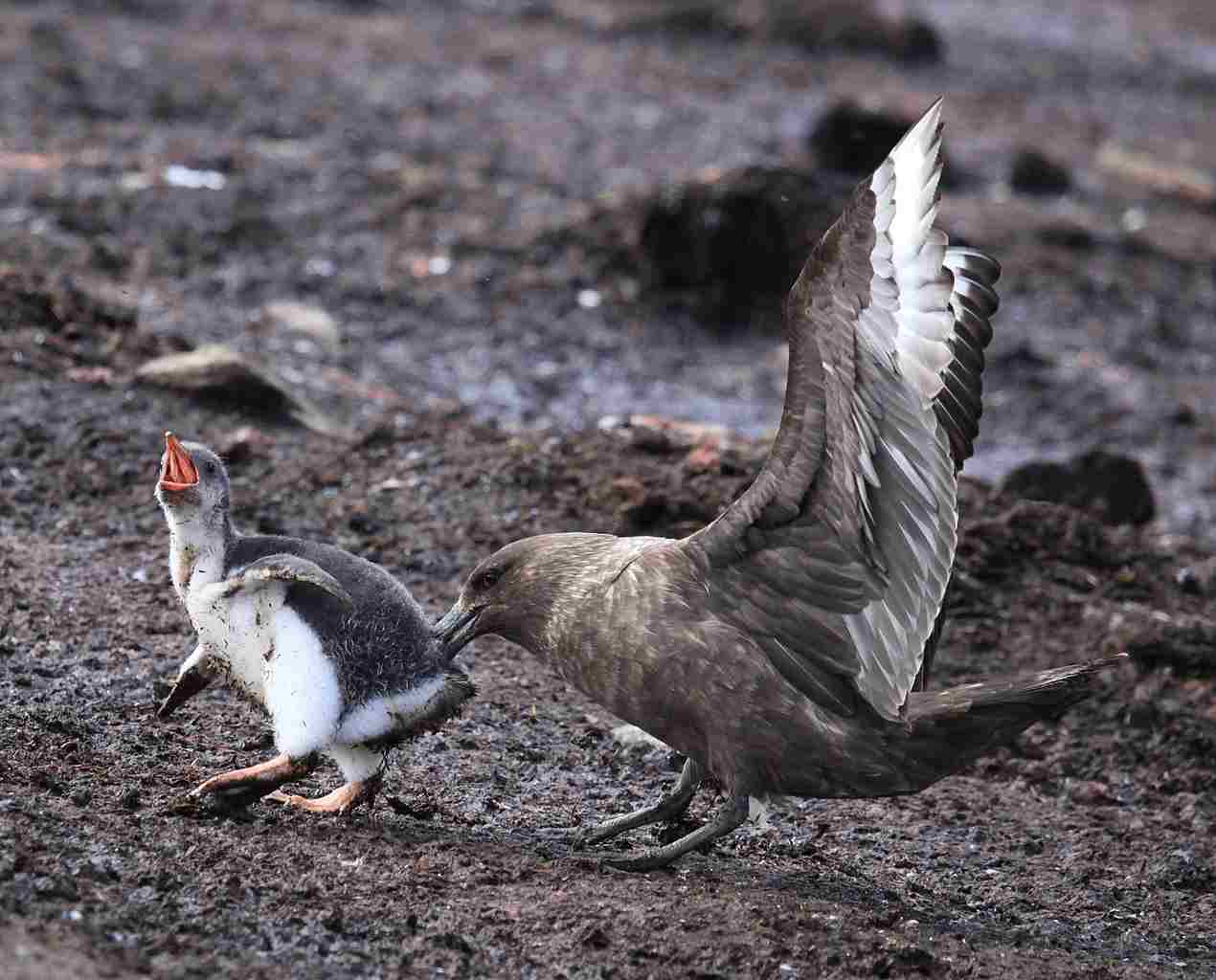
7. Do Sea Lions Eat Penguins?
Sea lions, like other predators in the marine ecosystem, have been known to occasionally prey on penguins. However, their preference for fish makes penguins a less common food source for them.
Sea lions are skilled hunters and have a diverse diet that primarily consists of fish. They are known to consume a variety of fish species, including anchovies, sardines, and herring. These fish provide a more abundant and easily accessible food source for sea lions compared to penguins.
In their natural habitat, sea lions can be found in coastal areas where penguins also reside. While sea lions may come into contact with penguins, their hunting behavior and dietary preferences make fish a more attractive option. Penguins, with their streamlined bodies and agile swimming abilities, are better adapted to catching fish in the water, making them a more challenging prey for sea lions.
Furthermore, sea lions are opportunistic feeders and will typically target prey that requires less effort to catch. Fish, being more abundant and often found in large schools, provide an easier and more energy-efficient meal for sea lions compared to hunting penguins.
8. Do Eagles Eat Penguins?
Eagles, being opportunistic predators, may occasionally prey on penguins, but it is not a common occurrence. When considering the question “Do eagles eat penguins?” in light of the earlier discussions, we can gain a better understanding of the dynamics between these two species.
In their natural habitats, eagles and penguins may share the same coastal areas. However, eagles typically have a diverse diet that includes a wide range of prey, such as fish, small mammals, and birds. While penguins may be part of their potential prey, eagles often prefer other food sources that are more readily available and easier to catch.
Penguins, with their streamlined bodies and excellent swimming abilities, are well-adapted to life in the water. They are agile hunters, primarily focused on catching fish. This makes them a more challenging target for eagles, which are better suited for aerial hunting or scavenging.
Moreover, eagles tend to target prey that requires less effort to catch. Penguins, with their ability to swim swiftly and dive underwater, can evade eagle attacks more effectively than other potential prey. Eagles are more likely to pursue prey that is slower or less agile, ensuring a higher success rate in their hunting endeavors.
9. What Fish do penguins eat?
Penguins have a diverse diet consisting of various kinds of fish, including cod, sardine, and herring. These fish species provide the necessary nutrients and energy for penguins to survive and thrive in their natural habitats.
Cod is a common prey for penguins, as it is abundant in the coastal areas where penguins reside. The high protein content in cod makes it an excellent food source for penguins, helping them maintain their energy levels and support their growth and reproduction.
Sardines are another important fish in the penguin diet. These small, oily fish are rich in omega-3 fatty acids, which are essential for the overall health and well-being of penguins. The high fat content in sardines provides the necessary energy for penguins to endure the cold temperatures of their habitats.
Herring is also a significant part of the penguin diet. These fish are known for their high nutritional value, containing essential vitamins and minerals that contribute to the overall health and vitality of penguins. Herring provides penguins with the necessary nutrients to support their immune system and maintain their physical condition.
Conclusion
* In the section “Is a Penguin a Producer?”, we explored the reasons why penguins are not considered producers. We discussed how penguins lack chlorophyll pigmentation, cannot synthesize organic compounds, and do not possess typical physiological features of producers.
* Moving on to the section “What Type of Consumer is a Penguin?”, we discovered that penguins are classified as secondary consumers. We examined the reasons behind this classification, including their biological complexity, predatory feeding habits, and their position in the food chain.
* In the section “Penguin Food Chain Position and Role”, we delved into the role of penguins in the food chain. We learned that while penguins are secondary consumers, their predatory effect on the food chain is relatively small. We also answered frequently asked questions about penguins’ consumer status and their diet.
* Finally, in the preceding section “What fish do penguins eat?”, we explored the diverse diet of penguins, including fish such as cod, sardine, and herring. We discussed the nutritional value of these fish and how they provide the necessary nutrients and energy for penguins to survive and thrive.
* Overall, this article has provided a comprehensive overview of the consumer status and role of penguins. We have examined why penguins are not producers, their classification as secondary consumers, their position in the food chain, and their diet. By understanding these aspects, we gain a deeper appreciation for the unique role that penguins play in their ecosystems.
